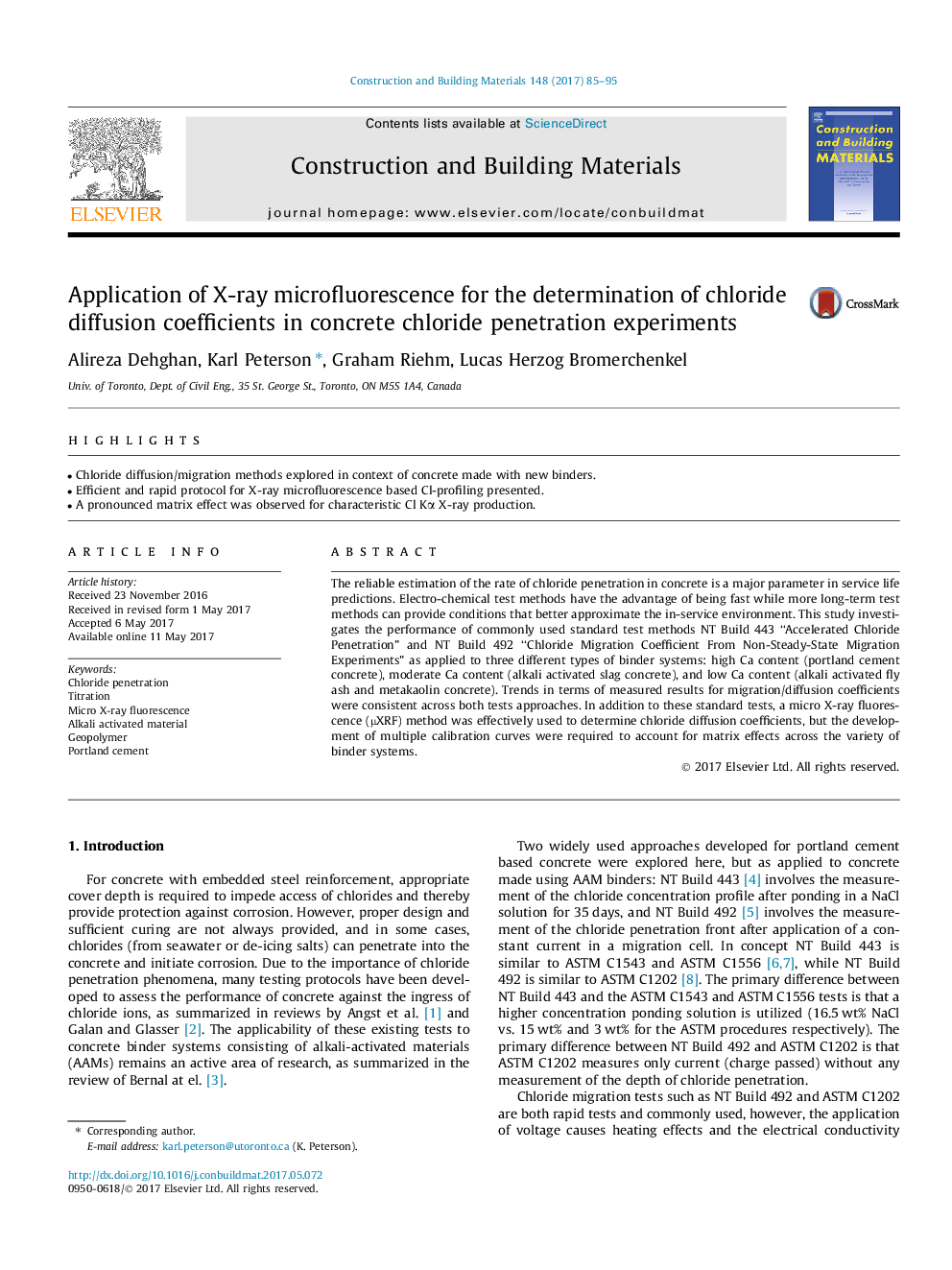| Article ID | Journal | Published Year | Pages | File Type |
|---|---|---|---|---|
| 6480278 | Construction and Building Materials | 2017 | 11 Pages |
â¢Chloride diffusion/migration methods explored in context of concrete made with new binders.â¢Efficient and rapid protocol for X-ray microfluorescence based Cl-profiling presented.â¢A pronounced matrix effect was observed for characteristic Cl Kα X-ray production.
The reliable estimation of the rate of chloride penetration in concrete is a major parameter in service life predictions. Electro-chemical test methods have the advantage of being fast while more long-term test methods can provide conditions that better approximate the in-service environment. This study investigates the performance of commonly used standard test methods NT Build 443 “Accelerated Chloride Penetration” and NT Build 492 “Chloride Migration Coefficient From Non-Steady-State Migration Experiments” as applied to three different types of binder systems: high Ca content (portland cement concrete), moderate Ca content (alkali activated slag concrete), and low Ca content (alkali activated fly ash and metakaolin concrete). Trends in terms of measured results for migration/diffusion coefficients were consistent across both tests approaches. In addition to these standard tests, a micro X-ray fluorescence (µXRF) method was effectively used to determine chloride diffusion coefficients, but the development of multiple calibration curves were required to account for matrix effects across the variety of binder systems.
